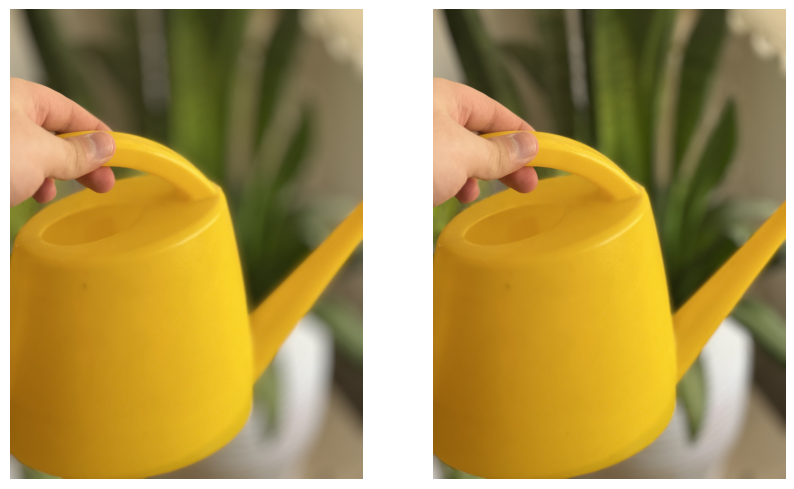One of the main problems when you are trying to train a model which has inputs with Gaussian Blur (and also outputs of the same type) is that the typical loss functions are not a good choice to use. E.g. look at the following images:
If you do a simple MSE between the two images, you will get a high value, even though the images are very similar! This is because the MSE is very sensitive to the pixel values, and not to the structure of the image.(same thing happens if you use the L1 loss or MAE Loss)
Now, Consider this set of images:
With our loss function (which is explained further), the values are (alpha is set to 0.8):
Loss Between img_1 and img_4:
tensor(0.2681, dtype=torch.float64)
Loss Between img_1 and img_3:
tensor(16.6952, dtype=torch.float64)
Loss Between img_2 and img_3:
tensor(16.8820, dtype=torch.float64)
Loss Between img_1 and img_2:
tensor(1.5494, dtype=torch.float64)
The loss function is based on the idea that the structure of the image is more important than the pixel values. So, we use some of the classical image processing techniques to leverage this idea. The loss function contains 2 main parts General_loss and Specific_loss which will be explained further:
General loss is calculated with these steps:
- Take DFT of image_1 and image_2
- Calculate the magnitude of the DFTs
- Calculate the difference between the magnitudes
- Return the normalized difference
This measurement (difference of DFT magnitude spectras) shows how generally the 2 pictures are the same and are the blurring positions (and so, the detected background) are the same. This is a good measurement for the general structure of the images.
Specific loss is calculated with these steps:
- Calculate Sobel of image_1 and image_2
- Calculate the difference between the Sobels
- Return the normalized difference
This measurement (difference of the Sobel filtered images) shows how specifically the 2 pictures are the same; meaning that if the position and structure of the foreground objects are the same. The reason is that Gaussian Blur smooths the image and so smooths the edges. Using sobel and an appropriate kernel size, the filtered image's output mainly contains the foreground (unblurred) objects and nothing more. So, the difference between the sobel filtered images shows how similar the foreground objects are.
There is one hyperparameter which you should tune while training the model, and that is
You can simply use the loss function like this:
from torch_blursim.blur_sim import BlurSim
loss = BlurSim(alpha=0.8)
...If you use this code in your research, please cite our work:
@misc{BlurSim,
title={BlurSim: A New Loss Function for Training Models with Gaussian Blur Inputs},
authors={AmirHossein Naghi Razlighi, Soroush Jahanzad},
primaryClass={cs.CV}
}

